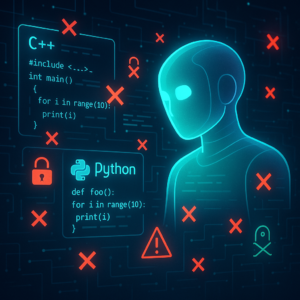Supercharging 3D Data Creation: A Deep Dive into 3D-VirtFusion

Supercharging 3D Data Creation: A Deep Dive into 3D-VirtFusion
When you think of the future of technology, what comes to mind? Perhaps virtual reality games that are indistinguishable from real life? Or robots navigating complex environments effortlessly? The magic ingredient behind these dreams is a rich variety of high-quality 3D data, and the latest groundbreaking tool in this domain is 3D-VirtFusion. This new method leverages giant AI models to generate innovative 3D data, and it’s paving the way for remarkable advances in AI applications with minimal hassle. Let’s break down what this means and how it works.
Why 3D Data is a Big Deal
Imagine trying to teach a child about objects and spaces only through photos — it’s not quite the same as letting them interact with real-world items. That’s the difference between 2D and 3D data. In the realm of AI and machine learning, having access to 3D data gives systems a more complete understanding of environments, which is essential for things like robotics and augmented reality. However, capturing and labelling 3D data is like trying to herd cats — it’s complex, expensive, and exhaustive. This is where 3D-VirtFusion steps in, offering a revolutionary way to generate this data synthetically.
A Virtual Avalanche of Synthetic Data: The How
Step 1: Crafting Diverse 2D Images
Starting with the formidable powers of diffusion models and text generated by ChatGPT, 3D-VirtFusion creates diverse 2D images that serve as templates. Think of diffusion models like nature’s way of shaping a sand dune from a pile of sand, gradually adding and removing details until something coherent emerges. These models use noise and iterations to form realistic images based on text prompts.
Step 2: Morphing into 3D
Once we have these 2D images, it’s like taking cardboard cutouts and breathing life into them, turning them into 3D figures ready for interaction. This transformation includes using depth maps — like giving a flat drawing extra dimensions to see how it would stand.
Step 3: Sprucing Up the Scene
After getting 3D objects, they are strategically placed into virtual scenes using smart algorithms. This isn’t just a haphazard assembly; it’s like arranging characters in a book to tell compelling stories each time — with no two scenes quite the same.
Step 4: Smart Editing for Realism
To add a dash of realism, models like DragDiffusion allow subtle tweaks in shapes and textures of these objects. Imagine a virtual ‘photo editor’ that nudges your scene towards more refreshing and natural variation, enhancing the synthetic yet lifelike appeal.
Real-World Magic: Making Dreams Practical
The practical benefits of such an innovative system are manifold. Companies can use these virtual scenes for training AI without the logistical nightmare of gathering data physically. It slashes costs dramatically and opens avenues for training AI in scenarios where data was either too scarce or too biased. Furthermore, industries like entertainment and e-commerce can produce everything from lifelike avatars and immersive virtual tours to interactive product previews, revolutionizing user experiences everywhere.
Key Takeaways
Let’s boil this down into bite-sized insights:
- 3D-VirtFusion is a powerhouse for making diverse 3D data easily, drawn from advanced AI models known for their creativity and flexibility.
- By transforming 2D imagery into rich 3D scenes, it eliminates the age-old problem of scanty and costly 3D data collection.
- The approach employs sophisticated text-to-image generation and editing techniques to ensure that the created content is as varied and realistic as possible.
- It is a game-changer for few-shot learning, class imbalance issues, and unlocking new possibilities in AI-driven innovation.
- 3D-VirtFusion stands as a beacon for future research and development, promising richer data sets at a fraction of the traditional cost and effort.
3D data is no longer just a leap forward — it’s becoming a quantum jump into new dimensions of possibility. As more people adopt and evolve these technologies, we’re only going to see more exciting developments, turning what was once science fiction into everyday reality.
With 3D-VirtFusion, the future is vivid, rich, and as dynamically immersive as our imaginations can make it.
If you are looking to improve your prompting skills and haven’t already, check out our free Advanced Prompt Engineering course.
This blog post is based on the research article “3D-VirtFusion: Synthetic 3D Data Augmentation through Generative Diffusion Models and Controllable Editing” by Authors: Shichao Dong, Ze Yang, Guosheng Lin. You can find the original article here.




